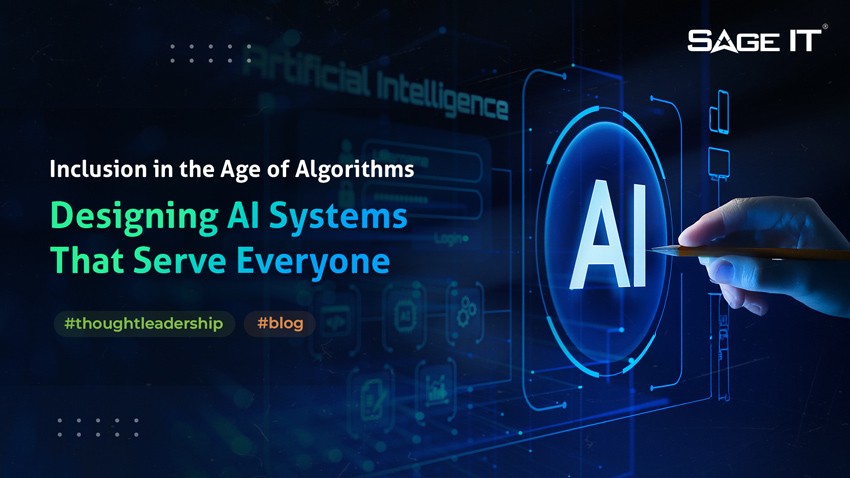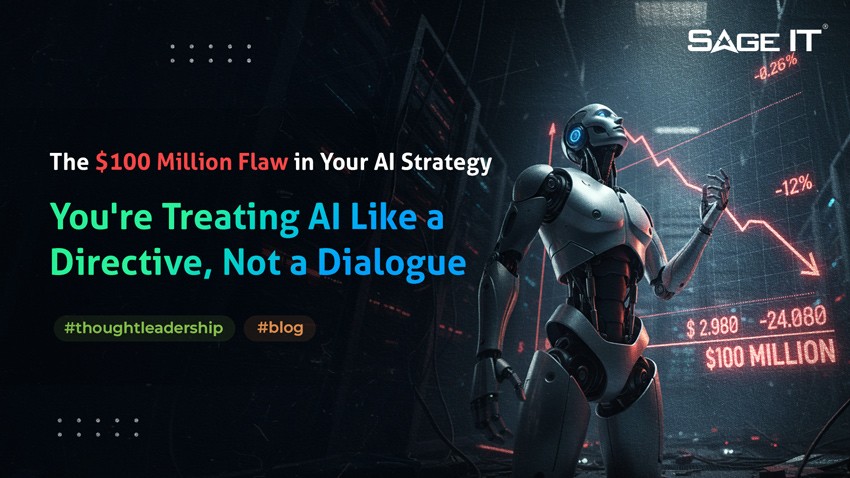Artificial Intelligence (AI) has become a cornerstone of modern innovation, transforming industries across the board. However, as these systems become more sophisticated, their inner workings often grow increasingly complex – a quality known as opacity. This lack of transparency can create concerns about fairness, accountability, and trust.
Enter Explainable AI (XAI). XAI refers to tools and techniques that make AI systems more understandable to humans. XAI aims to demystify AI operations, fostering a tech ecosystem that values both innovation and accountability.
The Need for Explainable AI
Traditional AI systems, particularly those based on deep learning, have been criticized for their “black box” nature. While powerful, these systems often lack transparency about how they arrive at their decisions. This opacity can lead to several issues:
Lack of Trust
A Critical Barrier to Adoption Without understanding the reasoning behind AI outputs, users may be hesitant to adopt these systems in critical situations. A patient might question an AI-assisted diagnosis if the contributing factors are unclear. Similarly, a business might be reluctant to implement an AI-driven hiring tool if they can’t explain why certain candidates were selected or rejected. This lack of trust hinders the full implementation and potential benefits of AI.
Bias and Fairness Concerns
The Risk of Amplifying Inequality AI systems are trained on data, and this data may reflect existing biases present in society. If these biases are not identified and addressed, the AI system risks perpetuating and even amplifying them. For example, facial recognition systems have been shown to be less accurate for people of color, and hiring algorithms might discriminate based on gender or other protected characteristics. XAI is crucial in detecting such biases, promoting fairness, and ensuring AI doesn’t become a tool for discrimination.
Regulatory Compliance
The Challenge of Meeting Standards Many industries, particularly healthcare and finance, are subject to strict regulations that demand transparency and accountability in decision-making processes. Opaque AI systems make auditing decisions and demonstrating compliance extremely difficult. For example, the EU’s General Data Protection Regulation (GDPR) includes a “right to explanation,” requiring that individuals impacted by automated decisions can receive meaningful information about the logic involved. XAI is indispensable for organizations operating in such regulated environments, allowing them to use AI responsibly and within legal frameworks.
How Explainable AI Works
Explainable AI (XAI) encompasses a diverse set of techniques that illuminate the inner workings of AI systems, providing valuable insights into how they arrive at their decisions. Here are some common approaches and how they’re applied:
Revealing the ‘Why’ Behind AI Predictions
Individual XAI techniques (like LIME or SHAP) could be explored in more detail, offering simple examples to illustrate their application. This would further demonstrate expertise and increase the article’s educational value. Let’s take a closer look at two common methods:
GenAI and Spotfire can transform banking and financial sector. Generative AI models can assess credit risk involved and predict market, leading to a better portfolio. With the help of predictive analytics capabilities built in Spotfire and GenAI, financial institutions can detect fraud activities and add additional security.
LIME (Local Interpretable Model-agnostic Explanations)
LIME provides explanations for individual predictions made by any type of AI model. Here’s how it works:
Perturbation
It slightly alters an input (such as changing words in a sentence or pixels in an image) and observes how these changes affect the AI’s prediction.
Simplified Model
LIME builds a simpler model around the original prediction, identifying which altered features had the most significant impact on the outcome.
SHAP (Shapley Additive Explanations)
SHAP is based on game theory concepts. It calculates how much each feature contributes to the difference between an AI model’s average prediction and the specific prediction you’d like to explain. Here’s a simplified explanation:
Feature Importance
Imagine a team of players contributing to a final score. SHAP distributes the “credit” for the final score (the prediction) among the players (features) based on their individual contributions.
Counterfactual Explanations
Exploring “What Ifs” By demonstrating how changes to input variables would affect the AI system’s output, counterfactual explanations offer users a deeper understanding of the underlying logic. In the case of a loan application, a counterfactual explanation might show that if an applicant’s income increased by a certain amount or their debt decreased, it would have resulted in an approval. This highlights specific, actionable factors that contribute to the AI’s decision, rather than just a yes or no.
Simplifying AI with Rule Extraction
XAI can help extract human-interpretable rules that approximate the behavior of complex AI models. In simpler models like decision trees, these rules are directly readable. Even with black-box models, XAI techniques can sometimes generate simplified rules that clarify the key factors influencing the system’s output. This is valuable in scenarios like risk assessments, where transparency is crucial.
Visualizing AI Decisions
Visual techniques like heatmaps and decision trees provide a window into how AI systems process information. In image recognition tasks, heatmaps highlight the areas of an image that were most important to the AI’s decision, such as identifying objects or anomalies. Decision trees break down the model’s logic into a flowchart-like structure, making its reasoning easier for humans to follow.
XAI as a Tool for Understanding and Improvement
It’s important to remember that explainability isn’t a one-time output. XAI often involves an interactive process where users can probe the AI system, receiving tailored explanations in response. These insights not only provide transparency but also help developers identify weaknesses in their models. This can lead to improvements in data collection, adjustments in the model’s design, or setting clearer limitations on how the AI system should be used.
Industry Applications and Benefits
Explainable AI is already positively impacting various industries, offering numerous benefits:
- Healthcare: XAI helps medical professionals understand AI-assisted diagnoses, facilitating trust and enabling better patient care. It can also aid in understanding patient risk predictions and treatment personalization.
- Finance: Explainable AI ensures transparency in credit scoring, fraud detection, and investment recommendations, promoting fairness and regulatory compliance.
- Automotive: XAI enhances the safety and ethical decision-making capabilities of autonomous vehicles.
- Retail: XAI provides insights into personalized recommendations and demand forecasting, enhancing customer satisfaction and improving operations.
- Law: XAI can make legal predictions more transparent, helping law firms understand the potential outcomes of cases and enabling more informed decision-making.
- Agriculture: XAI can help farmers understand the reasons behind AI-generated crop yield predictions, allowing for better-informed decisions and resource management.
- Energy Management: XAI can optimize energy distribution by providing clear insights into load predictions and identifying patterns in energy usage, leading to more efficient power grids.
Challenges and Limitations
While Explainable AI (XAI) has the potential to revolutionize how we interact with and trust AI systems, its implementation faces several significant hurdles:
The Complexity-Explainability Trade-off
One of the fundamental challenges lies in balancing the need for powerful, accurate AI models with the desire for transparency and interpretability. Advanced AI models, like deep neural networks, excel at handling complex patterns within large datasets but often struggle with clear explanations. Simpler models, such as decision trees, are inherently more interpretable, but they might not achieve the same level of performance on tasks involving highly complex relationships within the data. Striking the right balance and developing hybrid approaches that combine the strengths of both is an ongoing area of research in the XAI field.
Protecting Privacy in the Age of XAI
Making the workings of an AI model transparent can sometimes inadvertently expose sensitive data used for its training or the inner logic that could be exploited. For example, explanations for a medical diagnosis system might unintentionally reveal confidential patient information, or detailed insights into a fraud detection model could be misused. Developing XAI methods that provide sufficient explanation while rigorously protecting privacy and intellectual property is vital.
Future Trends and Predictions
The field of explainable AI (XAI) is rapidly evolving, and several key trends and predictions suggest that it will become even more integral to AI development and deployment in the coming years.
Unlocking Accuracy, Transparency, and Accessibility
Ongoing research promises to yield innovative techniques, powerful hybrid models that seamlessly combine interpretability with accuracy, and advancements in Natural Language Processing (NLP). NLP will allow AI systems to communicate their reasoning using plain language explanations, making them accessible to a wider range of users. Additionally, enhanced visualization tools will illustrate the inner workings of AI systems with even greater clarity, revealing how data is transformed into decisions.
AI Regulations Demand Transparency
As AI becomes increasingly pervasive and impactful, governments, regulatory bodies, and international organizations are likely to mandate stricter regulations around AI transparency. This is especially true in high-stakes areas like healthcare, finance, and autonomous systems where safety and accountability are paramount. These regulations will drive the adoption of XAI techniques and fuel the development of new tools that meet compliance standards.
Building Trustworthy AI Through XAI Standards
We can expect a strong movement towards standardization in XAI practices. The development of industry-specific frameworks tailored to unique needs and regulatory requirements will guide the development and assessment of XAI systems. Benchmarks and validation methods will be crucial in evaluating the effectiveness and reliability of XAI explanations, ensuring that they are accurate, meaningful, and consistent across different AI models and datasets.
These trends highlight a future where explainable AI isn’t merely an option but a fundamental component of the AI ecosystem. By embracing XAI principles, we can create AI systems that are not only powerful but also transparent, fair, and aligned with our values.
Conclusion
Explainable AI (XAI) provides a crucial solution to the lack of transparency that often surrounds AI systems. It bridges the gap between innovation and human understanding, fostering trust in AI decisions and ensuring they align with our values. XAI is essential because it facilitates trust in AI systems, especially in sensitive domains like healthcare and finance. By identifying and mitigating potential biases, XAI promotes fairness and prevents unintended discrimination. Moreover, XAI enables compliance with growing regulations around AI transparency, allowing for accountable and responsible use. By prioritizing explainability, we can fully leverage the potential of AI while ensuring its development and use are guided by our ethical principles and societal well-being.











